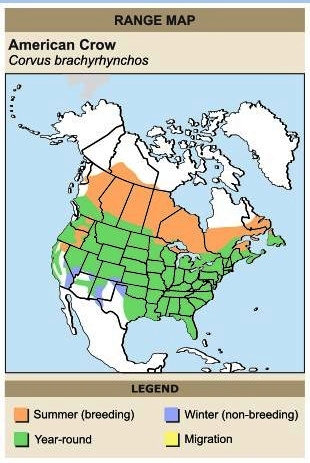|
blue-black wings. Tail is fan-shaped in flight. Eats insects, small invertebrates, amphibians, reptiles and mammals, eggs and young of other birds, grains, fruits, refuse, and carrion. Steady direct flight.  |
AMERICAN
CROW Range
and Habitat The American
Crow has been greatly affected by the recent introduction of West Nile
virus to North America. The American
Crow is native to Mexico, Canada and the United States. This bird has
been seen in Saint Pierre as well. The large range of this species of
bird is believed to be as much as 11 million kilometers. In terms of
population, the American Crow is thought to be quite significant and
include as many as 31 million individual birds. There is currently no
reason to think that the population of the American Crow will decline
soon. |



